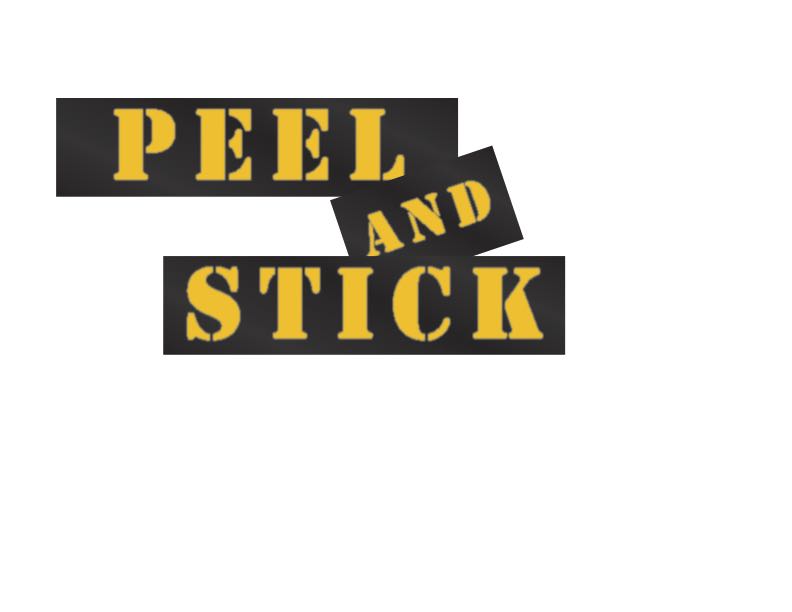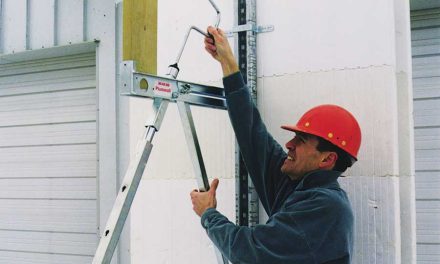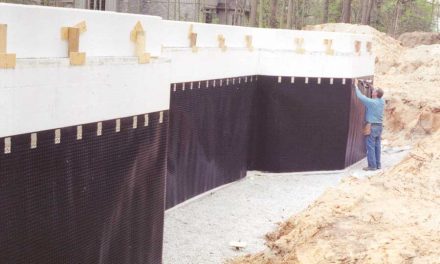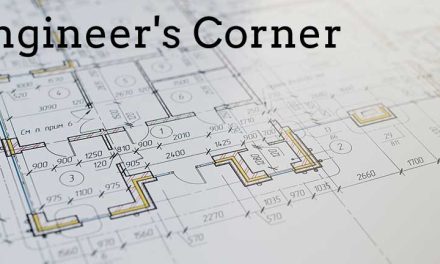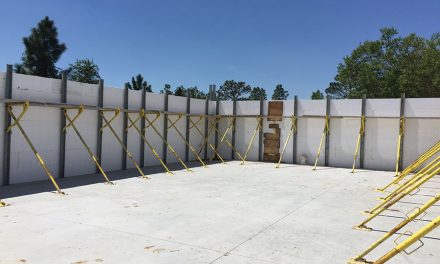Sheet waterproofing membranes effective when used on ICF forms:
Used for decades on below-grade waterproofing of foundation walls, tunnels, earth shelters, plaza decks, balconies and terraces, sheet waterproofing membrane systems provide superior waterproofing protection on ICF construction projects.
When consistency is important, like it is on below-grade ICF projects, waterproofing systems featuring self-adhering, rubberized asphalt sheet waterproofing membranes surfaced with a polymer film are an excellent choice. These flexible waterproofing systems, including products such as TAMKO’s TW-60, are manufactured to adhere to the ICF and provide a more consistent layer of waterproofing protection, when compared with spray-applied systems and others where consistency depends more on the applicator than on the product.
Sheet waterproofing membranes are applied to the form after the concrete cures. If the forms are clean and dry, there is no need to prime the forms before application of the waterproofing membrane. Long exposure to sunlight can create a chalky layer of material on the form surface which can interfere with adhesion. If this occurs, or if the surface of the form is dirty, excess dirt and dust can be brushed off, and then a water-based primer can be applied at a rate of approximately one gallon per 400-600 square feet, depending on the manufacturer’s instruction.
It is important not to use primers—or any other products containing solvents—under any circumstances, as those solvents are extremely aggressive and can rapidly break down the form material.
After the primer is completely tack free, the waterproofing membrane can be applied. It is unrolled, cut into workable lengths, then applied from the footing upward, in vertical strips. Install the membrane by positioning the sheet in place and simultaneously pulling and unrolling the release film out from behind the product while pressing the membrane into place. Side laps need to be 2-1/2 inches and end laps 5 inches. Stagger all end laps to ensure maximum protection. Use heavy hand pressure or a suitable roller to press the membrane firmly against the wall.
To prevent water from penetrating behind the membrane from the top edge, apply a 3/8-inch-thick bead of acrylic sealant using a putty knife, and then install a termination bar (wood or metal) at the head of the waterproofing. Vertical drainage and/or a protection course can be added over the waterproofing membrane for additional protection. Protection board should be used as a part of these waterproofing systems. Bead board, extruded polystyrene or two inch insulation is acceptable for use as a protection board. Use a ribbon of water based primer on the film surface of the waterproofing membrane to adhere the protection board to the membrane. Once the protection board has been installed, the area should be back filled as soon as possible. The back fill must be clean fill with no sharp rocks, nails, wood, or other debris that could tear or puncture the exposed exterior, or the waterproofing underneath.
Sheet waterproofing membrane systems, if installed in the manner described here, provide superior protection while maintaining consistency and control during the application process.
Neil Robinson is director of marketing at TAMKO. He can be reached via the company website at www.tamko.com.

